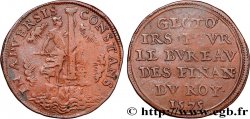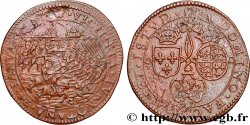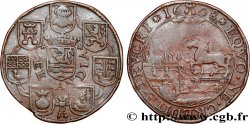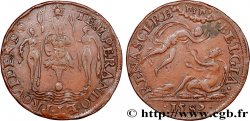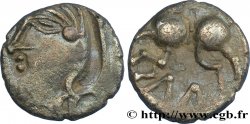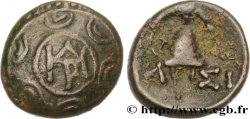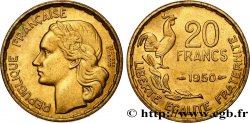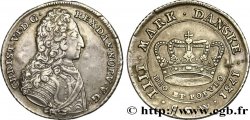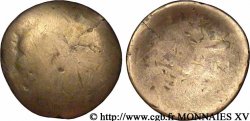Quantity
Add to your cart

Type : MEFIANCE AU SUJET DE LA TRÊVE
Date: 1608
Mint name / Town : Dordrecht
Metal : copper
Diameter : 31 mm
Orientation dies : 6 h.
Weight : 6,29 g.
Edge : Lisse
Rarity : R1
Coments on the condition:
Flan légèrement oblong
Catalogue references :
Obverse
Obverse legend : FIAT . VOLVNTAS . TVA . CICDC VIII..
Obverse description : un Hollandais en prière, protégé par le ciel, reçoit une branche de paix et une épée.
Reverse
Reverse legend : FORTITVDO . BELGICA ..
Reverse description : Un faisceau de flèches, accosté des lettres S . C..
Commentary
Ce jeton a été fabriqué lors des négociations préparatoires dans la ville de La Haye pour arriver a la Trêve de Douze Ans (1609 à 1621) pendant la guerre de Quatre-Vingts Ans (1568-1648) entre la République des Sept Provinces-Unies et le Roi d'Espagne. La trêve était nécessaire car les deux camps étaient épuisés financièrement après quarante ans de guerre. En 1608, il y avait des partisans et des opposants à la paix. Ce jeton est un moyen de propagande politique pour exprimer la scepticisme quant aux intentions sincères de l'adversaire concernant les négociations de paix.
This token was made during the preparatory negotiations in the city of The Hague to arrive at the Twelve Years' Truce (1609 to 1621) during the Eighty Years' War (1568-1648) between the Republic of the Seven United Provinces and the King of Spain. The truce was necessary because both sides were financially exhausted after forty years of war. In 1608, there were supporters and opponents of peace. This token is a means of political propaganda to express skepticism about the sincere intentions of the opponent regarding the peace negotiations.
This token was made during the preparatory negotiations in the city of The Hague to arrive at the Twelve Years' Truce (1609 to 1621) during the Eighty Years' War (1568-1648) between the Republic of the Seven United Provinces and the King of Spain. The truce was necessary because both sides were financially exhausted after forty years of war. In 1608, there were supporters and opponents of peace. This token is a means of political propaganda to express skepticism about the sincere intentions of the opponent regarding the peace negotiations.







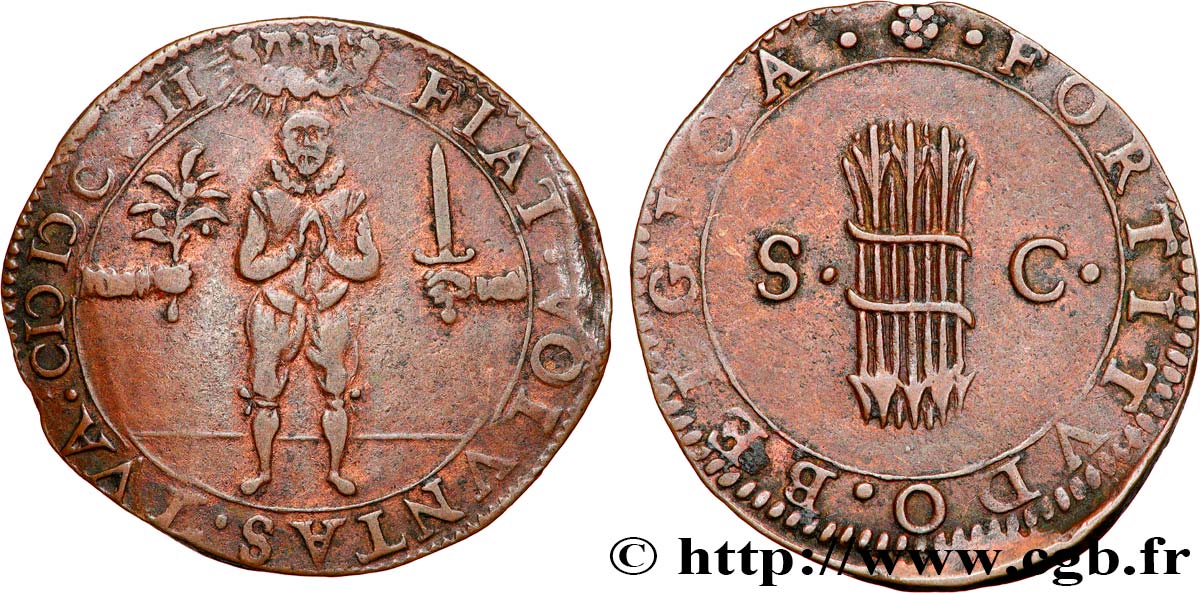
 Report a mistake
Report a mistake Print the page
Print the page Share my selection
Share my selection Ask a question
Ask a question Consign / sell
Consign / sell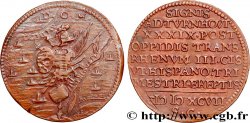
 Full data
Full data
